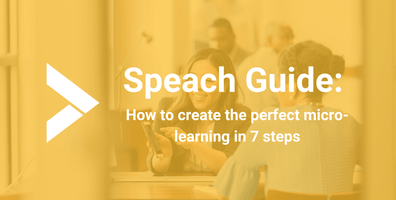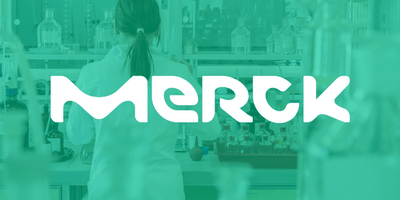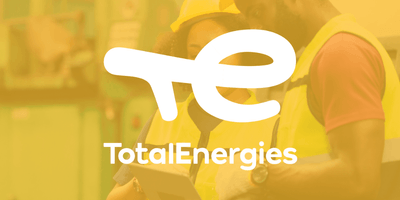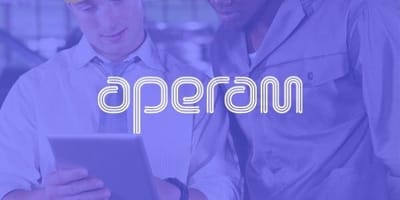In today's rapidly evolving workplace, the traditional approach to Standard Operating Procedures (SOPs) is failing to meet the demands of modern skill development. Most organizations invest significant resources creating comprehensive documentation, only to watch these valuable resources gather digital dust in shared folders or binders. The problem isn't the content itself—it's how that content is packaged, delivered, and experienced by employees.
At Speach.me, we've pioneered a methodology that transforms static SOPs into dynamic, engaging learning experiences that actually build skills and improve performance. This comprehensive guide will walk you through our process, provide concrete examples, and show you exactly how to turn your existing procedural documentation into powerful training tools that drive real results.
Understanding the Urgent Need for Training Transformation
Before diving into the transformation process, it's important to understand why this shift is so critical for organizations today. Recent research paints a compelling picture of the current workplace learning landscape and the challenges businesses face.
The skills required for today's workplace are evolving at an unprecedented pace. According to recent studies, the skills needed for today's job market have changed by roughly 25% since 2015 and are expected to change by 50% by 2027. This rapid evolution means that organizations must find more effective ways to continuously upskill their workforce to remain competitive.
This skills evolution is creating significant pressure on employees. Research shows that 52% of workers acknowledge they need to learn new skills within the next year just to continue in their current careers. Even more concerning, 46% of employees admit they currently lack the skills they need to perform their jobs effectively. These statistics highlight a critical skills gap that traditional training methods are failing to address.
The consequences of this skills gap are profound. Organizations with ineffective training approaches face higher turnover rates, reduced productivity, and increased compliance risks. In contrast, companies that implement effective training programs see substantial benefits. Studies indicate that companies offering comprehensive training to engaged employees are 17% more productive and 21% more profitable than those that don't prioritize learning and development.
Traditional SOPs, while valuable as reference documents, often fail as training tools because they're designed for documentation rather than skill building. They typically lack context, examples, practice opportunities, and engagement mechanisms that effective learning requires. By transforming these static documents into interactive learning experiences, organizations can address the skills gap while maximizing the value of their existing procedural content.
The Anatomy of a Traditional SOP vs. a Skill-Building Learning Experience
To understand the transformation process, let's first examine the fundamental differences between traditional SOPs and skill-building learning experiences. Consider this typical customer complaint handling procedure:
Traditional SOP: Customer Complaint Handling Procedure
Purpose: This document outlines the standard procedure for receiving, processing, and resolving customer complaints across all channels.
Step 1: Receive customer complaint via phone, email, or in person.
Step 2: Document complaint details in the Customer Relationship Management (CRM) system, including customer information, purchase details, and nature of complaint.
Step 3: Categorize complaint by type (product defect, service issue, billing problem, etc.).
Step 4: Assign severity level (low, medium, high) based on impact to customer and business.
Step 5: Escalate high-severity complaints to department manager via email notification.
Step 6: Investigate complaint by reviewing relevant records, order history, and previous interactions.
Step 7: Contact customer within 24 hours with acknowledgment and investigation update.
Step 8: Resolve complaint according to company policy and document solution implemented.
Step 9: Document resolution in CRM with detailed notes on actions taken.
Step 10: Follow up with customer to confirm satisfaction with resolution.
This traditional SOP provides comprehensive documentation but falls short as a training tool for several key reasons. First, it focuses entirely on what to do but provides no guidance on how to do it effectively. Second, it offers no examples of successful implementation. Third, it fails to address the emotional and interpersonal aspects of complaint handling that often determine success or failure. Finally, it provides no way for employees to practice these skills before facing real customers.
Now, let's see how this same procedural content transforms into a skill-building learning experience:
Speach Smart Training: Customer Complaint Handling Skill Builder
Module 1: Understanding Customer Complaints
This introductory module uses video instruction to explain the psychology of customer complaints and why effective handling matters to both customers and the business. It includes real customer testimonials about both positive and negative complaint experiences and how they affected brand loyalty. The module establishes the business case for excellence in this area and creates emotional buy-in from learners before diving into procedures.
Module 2: The Complaint Handling Process
This core module breaks down the process steps using a combination of animated explainer videos, narrated screen captures of the CRM system, and expert commentary. Each step of the procedure is demonstrated with specific examples. For instance, rather than simply instructing employees to "document complaint details," the training shows exactly what information to capture and how to organize it in the system for effective follow-up. Similarly, it doesn't just tell employees to "assign a severity level" but provides clear criteria and examples for each level to ensure consistent categorization.
Module 3: Communication Skills for Complaint Resolution
This module focuses on the critical soft skills needed for effective complaint handling. It includes audio examples of both effective and ineffective customer conversations, with expert analysis of what makes each approach work or fail. Employees learn specific de-escalation techniques, empathetic listening methods, and how to maintain a positive, solution-focused approach even with highly dissatisfied customers.
Module 4: Practice Scenarios
This interactive module presents employees with realistic complaint scenarios based on common situations in your business. Employees must navigate these scenarios, making decisions about how to categorize, respond to, and resolve each complaint. The system provides immediate feedback on their choices and suggests alternative approaches when needed. This risk-free practice environment allows employees to develop confidence and competence before handling real customer issues.
Module 5: Skill Certification
The final module combines knowledge assessment and skill demonstration. Employees complete a quiz covering key concepts and procedures, then participate in a simulated complaint scenario that requires them to apply all aspects of the process correctly. Upon successful completion, they receive a certification in Customer Complaint Resolution, recognizing their newly developed skill.
This transformed approach addresses all the limitations of the traditional SOP. It provides context, examples, and guidance on how to implement the procedure effectively. It addresses both technical process steps and essential soft skills. Most importantly, it provides opportunities for practice and feedback that build true competence rather than just awareness of the procedure.
The Six-Step Process for Transforming SOPs into Skills
Now that you understand what the transformation looks like, let's explore the step-by-step process for turning your existing SOPs into powerful skill-building experiences.
Step 1: Analyze Your Existing SOP
The transformation process begins with a thorough analysis of your existing SOP document. This analysis serves as the foundation for all subsequent development work. Start by identifying the core procedures and breaking them down into discrete steps. For each step, determine the underlying knowledge requirements, decision points, and potential obstacles to implementation.
Next, evaluate the current effectiveness of the SOP by gathering feedback from both experienced users and new employees. Ask questions like: Which parts of this procedure are most challenging for new staff? Where do errors or inconsistencies typically occur? What contextual knowledge do experienced employees have that isn't captured in the documentation?
Also consider the learning objectives that should be associated with this procedure. What should employees be able to do after mastering this content? How will success be measured? What specific skills—both technical and interpersonal—are required for effective implementation? This comprehensive analysis will guide all subsequent development decisions.
Step 2: Identify Knowledge Gaps and Contextual Elements
Traditional SOPs often focus exclusively on the "what" of a procedure while omitting crucial contextual information that explains "why" and "how." In this step, work with subject matter experts to identify these missing elements. What background knowledge is assumed but not explicitly stated? What business context explains why the procedure exists in its current form? What alternative approaches might employees try if they don't understand the underlying principles?
Also identify areas where procedural knowledge alone is insufficient for successful implementation. For example, a customer service procedure might require empathy, active listening, or conflict resolution skills that aren't addressed in the original documentation. Similarly, a technical procedure might require troubleshooting abilities or decision-making skills that go beyond following prescribed steps.
This step often reveals significant gaps between what's documented and what employees actually need to know to perform effectively. These gaps become priority content areas in your transformed learning experience.
Step 3: Create Multi-Modal Learning Content
With a clear understanding of both the explicit procedure and the implicit knowledge requirements, begin creating diverse learning content that addresses different aspects of the skill and accommodates various learning preferences. This is where transformation truly begins.
For procedural steps, create clear visual demonstrations that show exactly how to perform each action. This might include screen recordings of digital processes, video demonstrations of physical tasks, or animated sequences that illustrate complex workflows. Accompany these visuals with clear narration that explains not just what to do but why it's done that way.
For contextual knowledge, develop explanatory content that helps employees understand the business rationale behind the procedure. This might include brief interviews with leadership explaining the importance of the process, data visualizations showing its impact on business metrics, or customer testimonials highlighting its effect on the user experience.
For soft skills components, create modeling videos that demonstrate effective and ineffective approaches. For example, if the procedure involves customer interaction, show contrasting examples of how to communicate during the process, with expert commentary highlighting the key differences and their impact.
Throughout content development, focus on chunking information into manageable segments that align with how people naturally learn. Each component should be brief (typically 3-7 minutes) and focused on a specific aspect of the overall skill.
Step 4: Develop Interactive Practice Opportunities
Skill development requires practice, yet traditional SOPs provide no opportunities for employees to apply what they've learned. In this step, create interactive scenarios that allow learners to practice implementing the procedure in realistic situations.
These practice activities should progress from simple to complex. Begin with basic knowledge checks that ensure understanding of key concepts and steps. Then advance to scenario-based exercises where employees must apply the procedure to realistic situations. Finally, incorporate complex decision-making scenarios that require judgment and adaptation of the basic procedure to handle exceptions or unusual circumstances.
Ensure that each practice activity includes immediate, constructive feedback. When learners make incorrect choices, don't simply tell them they're wrong—explain why the choice was suboptimal and guide them toward a better approach. This type of formative feedback accelerates the learning process and helps employees develop true mastery.
Step 5: Build Knowledge Assessment and Skill Verification
Effective learning experiences include mechanisms to verify both knowledge acquisition and skill development. In this step, create assessment components that measure both understanding and application.
Knowledge assessments might include quizzes covering key concepts, procedure steps, decision criteria, and common pitfalls. These assessments confirm that employees have absorbed the foundational information needed to implement the procedure correctly.
Skill verification goes beyond knowledge testing to evaluate whether employees can actually apply what they've learned. This typically involves performance-based assessments where employees must complete realistic tasks or navigate complex scenarios that mirror real-world implementation. These assessments should be designed to measure not just procedural compliance but also effectiveness, efficiency, and adaptability.
Together, these assessment components provide confidence that employees are truly prepared to implement the procedure successfully in their actual work.
Step 6: Implement Continuous Improvement Mechanisms
The final step in transformation ensures that your skill-building experience continues to evolve as processes, technologies, and business needs change. Implement feedback mechanisms that capture insights from both learners and performance data.
Gather direct feedback from employees about the learning experience itself: What was most helpful? What remains unclear? What additional support would improve their confidence and competence? This qualitative feedback highlights opportunities for enhancement.
Also establish systems to monitor performance data related to the procedure. Are error rates declining? Is implementation becoming more consistent? Are customer satisfaction scores improving for related interactions? This quantitative data provides objective evidence of the training's impact and identifies areas where further refinement may be needed.
Use these insights to regularly update and enhance your training experience, ensuring it remains relevant and effective even as your business evolves.
The Business Impact: Why This Transformation Matters
Transforming static SOPs into dynamic skill-building experiences requires investment of time and resources. Is it worth it? The research emphatically suggests yes. Organizations that implement effective training approaches see significant business benefits across multiple dimensions.
First, employee performance improves dramatically. Studies show that employees who receive well-designed, engaging training can be up to 50% more productive than those who receive inadequate training or none at all. This productivity boost comes from reduced errors, faster execution, fewer questions and escalations, and greater confidence in implementing procedures correctly the first time.
Second, employee satisfaction and retention increase substantially. Research indicates that 71% of workers report higher levels of job satisfaction when they receive adequate and regular training. Furthermore, 45% of workers say they would be more likely to stay with their current employer if better training opportunities were offered. In today's competitive talent market, this retention effect alone can justify the investment in training transformation.
Third, organizational adaptability improves. Companies with robust skill-building programs report being 58% more likely to successfully navigate industry disruptions and market shifts. By creating a workforce that continuously develops new capabilities, these organizations build resilience against changing business conditions and technological evolution.
Finally, customer experience tends to improve significantly. Organizations that implement skill-focused training for customer-facing procedures report an average 32% increase in customer satisfaction scores. This improvement stems from more consistent service delivery, higher-quality customer interactions, and faster resolution of issues when they arise.
These benefits combine to create substantial financial impact. Companies offering effective employee training have a 24% higher profit margin compared to those with inadequate training programs. This profit improvement reflects both increased revenue (through better customer retention and expansion) and reduced costs (through higher productivity and lower employee turnover).
Getting Started: Your First SOP Transformation
Ready to begin transforming your SOPs into powerful skill-building experiences? The best way to start is with a focused pilot project that demonstrates the impact of this approach in your specific business context.
Choose an SOP that meets these criteria for your initial transformation:
High impact: Select a procedure that significantly affects customer experience, operational efficiency, or compliance outcomes. This ensures your pilot will deliver measurable business results.
Moderate complexity: Avoid both extremely simple procedures (where transformation may add limited value) and extremely complex ones (which might create challenges for your first project). A moderately complex procedure with 8-12 steps typically provides an ideal starting point.
Frequent usage: Choose a procedure that's implemented regularly across your organization. This ensures that your transformed training will get substantial use and generate significant data about its effectiveness.
Clear success metrics: Select a procedure where performance can be objectively measured. This might include metrics like error rates, completion time, customer satisfaction, or compliance scores.
Once you've selected an appropriate procedure, you can either apply the six-step transformation process internally or partner with experts who specialize in this work. Either approach can be effective, though working with specialists often accelerates results and minimizes the learning curve associated with new methodologies.
Conclusion: From Documentation to Transformation
The shift from static SOPs to dynamic skill-building experiences represents a fundamental evolution in how organizations approach procedural knowledge and capability development. By transforming existing documentation into engaging, interactive learning experiences, companies can address the growing skills gap, improve employee performance, and drive better business results.
This transformation doesn't require discarding your existing SOPs—it builds upon them, enhancing their value and impact through thoughtful instructional design and modern learning technology. The result is a workforce that doesn't just know what to do but has developed the skills to do it exceptionally well.
As the workplace continues to evolve at an unprecedented pace, with skills changing by up to 50% by 2027, this transformation isn't just beneficial—it's becoming essential for organizational success and survival.
Ready to See What Your SOPs Could Become?
At Speach.me, we specialize in transforming static procedures into dynamic skill-building experiences that drive measurable business results. Send us one SOP, and we'll show you what it could become—no obligation, no pressure, just a concrete demonstration of the potential waiting to be unlocked in your existing procedural content.
Contact us today to start your transformation journey.
© 2025 Speach.me. All rights reserved.





